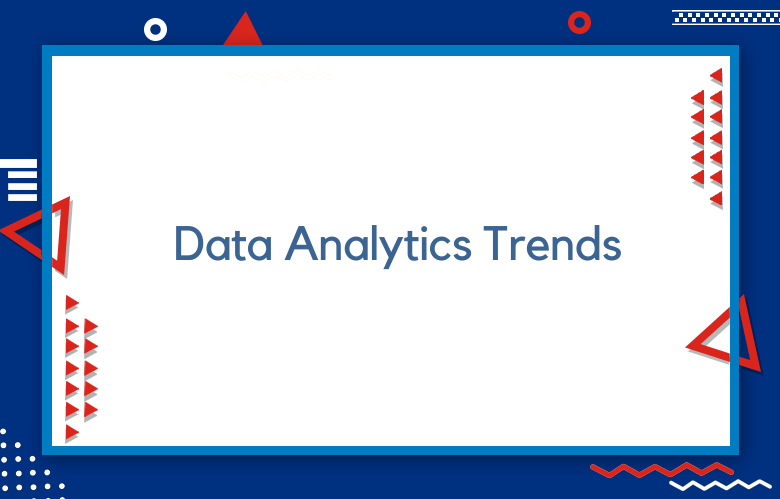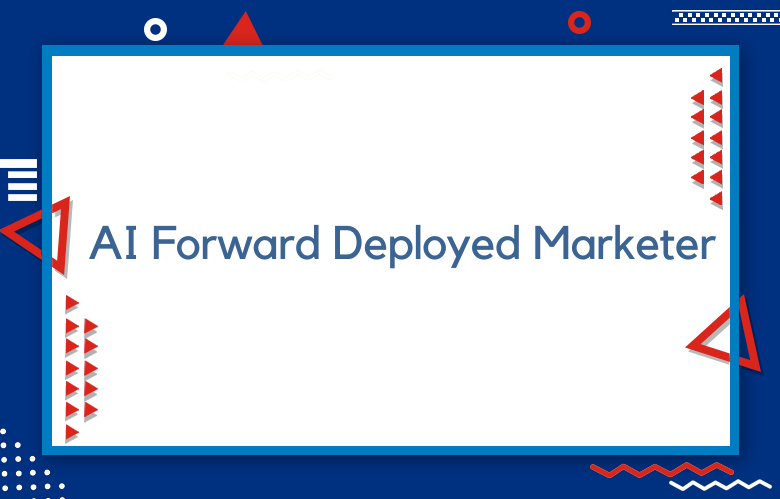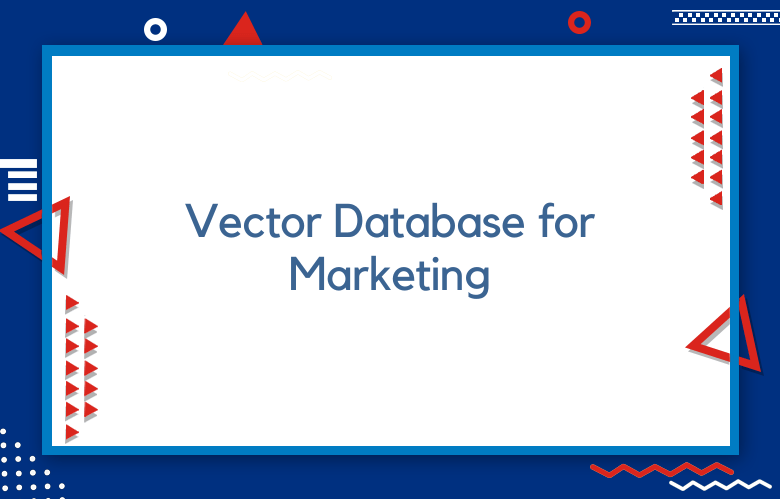Data Analytics Trends to follow in 2024

Data analytics is rapidly changing and evolving. As we move into 2022, specific trends will dominate the field. We will explore the top data analytics trends for the coming year. So, what are these trends? Let’s take a closer look!
The world of data analytics is evolving every day. Businesses are looking for new and innovative ways to collect and analyze data to make better decisions. Here are three trends that will dominate the field of data analytics in 2022.
Data Analytics Trends to follow in 2024
Predictive analytics will become even more popular. Predictive analytics uses historical data to predict future events or trends. This technology can improve decision-making in various areas, such as business strategy, product development, and marketing.
The use of artificial intelligence (AI) will increase. AI involves using computers to perform tasks that usually require human intelligence, such as understanding natural language and recognizing objects.
- The use of “intelligent” sensors to collect data from the environment
- Connected devices that can communicate with each other and analyze information for you
- Artificial intelligence embedded in systems, including robots, drones, and autonomous vehicles
- More advanced processing power – computers will be able to process more data at a faster rate than ever before
- Data as a service will be more accessible to small business owners
- There will be a rise in data-driven decision-making due to the increased use of AI and machine learning
- The Internet of Things (IoT) will create new opportunities for data collection
- A greater focus on privacy and security of user data
- Data will be collected and analyzed by sensors in the environment, not just humans
- Machine learning will replace most human-driven data analysis
- The rise of intelligent agents to help us find and analyze data for ourselves
- The rise of the data scientist
- Data science in healthcare
- The power of predictive analytics and AI to transform customer experience and marketing
- Consumerization of big data and analytics in enterprises
- Data analytics will be used in more industries
- Businesses will use data analytics to predict customer behavior and needs
- More companies will start using data analysis for marketing purposes, including email campaigns and social media ads
- Companies without a data analyst on staff will outsource their work to third-party providers
- Data will be more accessible
- Data security will become a significant concern
- Machine learning algorithms will analyze the data, giving human analysts better insights into trends.
- Data-driven decision-making is a trend that will continue to grow in the next five years.
- The use of big data and predictive analytics will be critical to the success.
- Artificial intelligence will become more prevalent, with chatbots being commonplace.
- In 2022, we can expect increased automation in customer service interactions.
- Data will be collected from a broader range of sources, including IoT devices and sensors.
- The number of data points collected per person will increase exponentially
- Companies will use predictive analytics to make decisions for their customers before they even know what they want or need
- Artificial intelligence (AI) systems will become more prevalent in the workplace as well as in consumer technology
- AI systems could eventually replace human workers
- The number of data points will continue to increase exponentially
- Data scientists will become more specialized in their field, and the demand for them will be high
- Artificial intelligence (AI) is predicted to advance at an exponential rate as well
- Big data projects are expected to be completed much quicker than before
- The use of AI to analyze data will grow
- Data security breaches will increase, but so will the awareness of them and the ability to combat them.
- For example, big data analytics projects are becoming more common and often used in marketing campaigns.
- More people than ever before are using their devices to analyze data.
- Data will be collected from more sources than ever before
- The “data of things” will lead to a new generation of analytics
- Organizations will work hard to protect their data and privacy rights
- Individuals’ personal information will be used for marketing purposes, but they’ll have the ability to opt out at any time
- The rise of Artificial Intelligence and Machine Learning
- Big Data, the new currency for businesses
- Hacking will be a primary concern as more data is stored in cloud-based systems.
- New technologies like blockchain will disrupt industries and redefine relationships between consumers and organizations.
- Data is more critical than ever.
- Analytics will be used to make decisions in all aspects of life
- More data on individuals will be collected, increasing the need for privacy protection
- The amount of data generated by IoT devices will continue to grow exponentially
- Data storage costs are decreasing while processing power is increasing
- Data will be used for more than just marketing
- There will be an increase in machine learning to make better decisions.
- Artificial intelligence will be able to predict consumer behavior
- Personalized shopping experiences are going to grow exponentially
- Data will be used to predict outcomes- for example, the likelihood of someone becoming a customer
- More people will have access to data and analytics tools because they are cheaper and more user-friendly
- Data scientists will continue to be in high demand
- Artificial intelligence (AI) is expected to become more sophisticated as it takes on more tasks that humans once did
- Data will be the most valuable commodity in 2022
- There will be more data than ever before, coming from all different sources.
- The IoT (Internet of Things) is expanding exponentially, with millions of devices generating data 24/7
- Data analysis tools are improving. For example, machine learning algorithms can now extract insights from unstructured data like emails or chat messages.
- Data-driven decision-making will become the norm.
- AI will be used to optimize decision-making processes
- The cloud will continue to grow in importance as a data storage platform
- Blockchain technology will evolve and transform into new industries, including healthcare
- Data is the new oil
- The demand for data-driven decision-making will continue to grow, and organizations must find ways to increase their data analytics capabilities.
- A skills gap in this area of expertise will increasingly challenge organizations, and they may need to consider training or outsourcing staff with these skillsets.
- Artificial intelligence (AI) and machine learning (ML) are increasingly used in data analytics, which has implications for privacy protection, security, ethics, and bias.
- The rise of predictive analytics and machine learning will continue to disrupt industries.
- Privacy concerns will grow exponentially as more data is collected in various formats, from wearables to smart homes.
- Companies that have a strong cybersecurity stance will better protect themselves against cyberattacks.
- Data will be used to make decisions in every industry, from finance to healthcare.
- Artificial intelligence will transform the way we work and live
- Companies that don’t use data analytics will fail
- Technology-driven companies with a strong culture of innovation and creativity will thrive.
A Look Ahead: Top Data Analytics Trends for 2024
As we look ahead to 2024, the field of data analytics is poised for significant evolution, driven by technological advancements and shifting business needs. Here’s an overview of the top trends expected to shape data analytics in the coming year:
- Automated Machine Learning (AutoML): AutoML will continue to rise, making advanced data analytics accessible to non-experts. By automating the process of applying machine learning models to complex datasets, AutoML enables more companies to leverage predictive analytics without requiring deep technical know-how.
- Augmented Analytics: This trend uses AI and machine learning to augment human intelligence and contextual awareness. Augmented analytics automates data preparation and shares insights to broaden the use of analytics across organizations. It helps democratize data and make decision-making more data-driven without extensive training.
- Real-time Analytics: With businesses operating at unprecedented speeds, real-time analytics will become even more critical. Industries such as finance, retail, and manufacturing will particularly benefit from immediate insights into customer behavior, supply chain status, or financial positions.
- Quantum Computing: Although still in its early stages, quantum computing is expected to start impacting data analytics by solving complex problems much faster than traditional computers. This could revolutionize areas such as cryptography, optimization, and traffic simulation.
- Data Fabric Technology: Data fabric provides a flexible, resilient integration of data across platforms and business users, making data available everywhere it’s needed, regardless of its location. This technology reduces data management efforts by up to 70%, according to Gartner.
- Privacy-Enhancing Computation: As privacy concerns grow, technologies that protect data while it is being used — rather than just when it is stored and in transit — will become more popular. This approach allows for secure data sharing and analytics, even in highly regulated industries.
- Edge Computing: By processing data nearer to where it is generated (at the “edge” of the network), edge computing reduces latency and bandwidth use, making it ideal for real-time applications, such as IoT devices in manufacturing.
These trends illustrate a broader move towards more sophisticated, real-time analytics that are integrated into daily business processes. They promise to enhance the efficiency and efficacy of data-driven decision-making, ultimately enabling more agile and competitive business practices.
Data Analytics Forecast: Key Trends to Watch
Conclusion
Data analytics is one of the fastest-evolving fields in marketing and will continue to be so. In 2022, we’ll see more data-driven decision-making that moves beyond customer analysis into other verticals, such as product development and sales forecasting.
Three major trends have driven this evolution:
- Data democratization,
- Big Data explosion and
- Increased analytical innovation.
If you want to get a head start on this trend but don’t know where to turn for help, contact us for Marketing Consulting services today!
Call: +91 9848321284
Email: [email protected]



